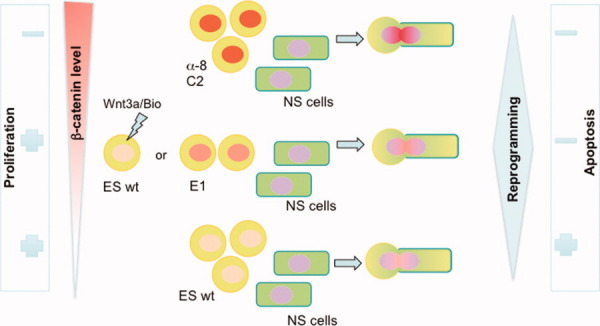Figure 5.

Spontaneous-fusion-mediated cell reprograming is controlled by β-catenin levels in ESCs and not by their proliferation. Wild-type ESCs and ES clones expressing low and high β-catenin levels fuse with Neural stem cells (NSCs) spontaneously with the same low efficiency. Only the hybrids formed by NSCs fused with Wnt3a-/BIO-treated ESCs or the E1 β-catenin clone become reprogramed and can be selected with high efficiency. In contrast, hybrids formed by NSCs fused with wild-type ESCs enter into apoptosis-mediated cell death. Interestingly, the hybrids formed by NSCs fused with α-8 and C2 clones, which express high levels of β-catenin, neither become reprogramed nor enter into apoptosis or proliferate. This is likely due to the high levels of p16Ink4a and p19Arf, see main text for details. Interestingly, β-catenin levels in ESCs modulate their ability to proliferate; however, ESC proliferation does not modulate cell fusion-mediated reprograming efficiency. Abbreviations: BIO, 6-bromoindirubin-3′-oxime; ES, embryonic stem; NS, neural stem.
